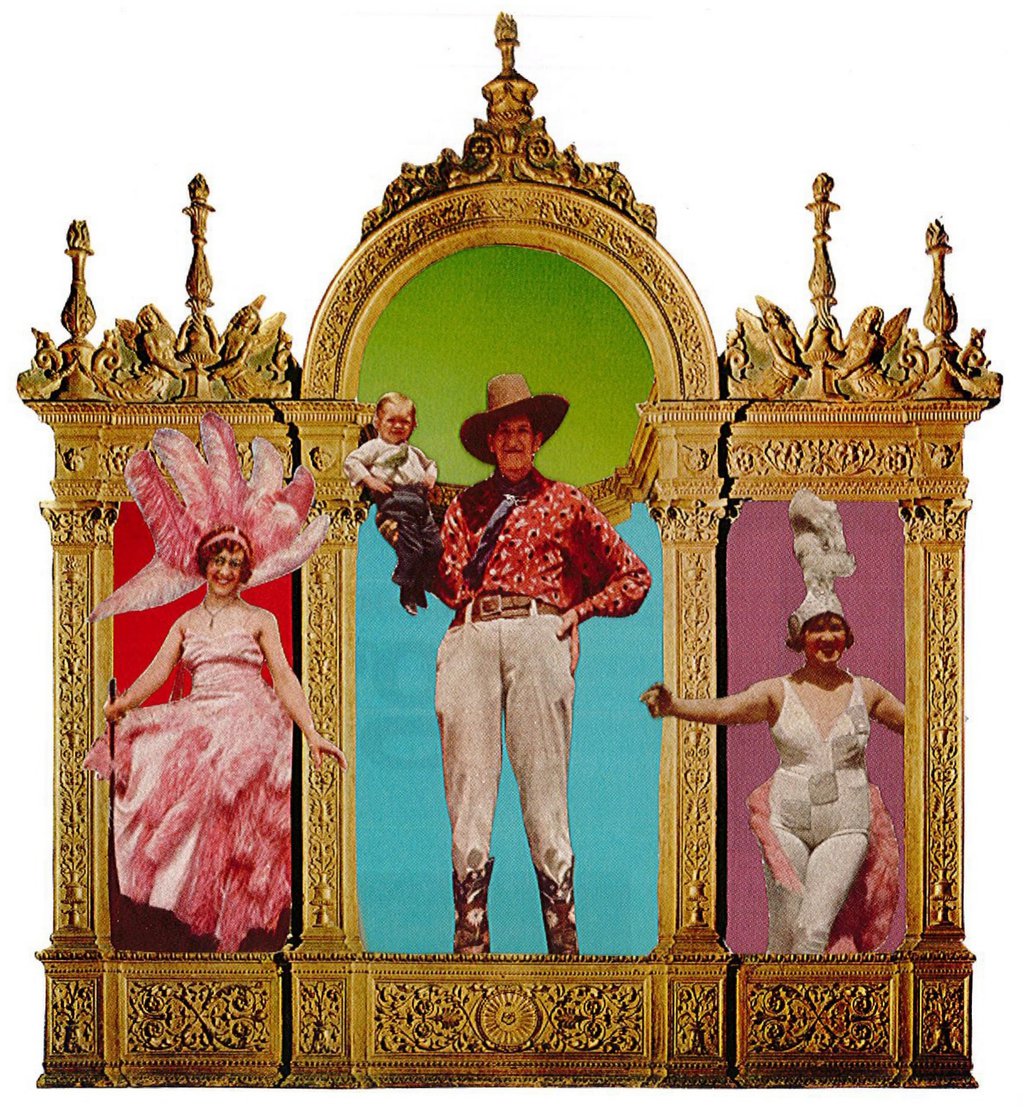It is rare that I make a complete collage when I spend a night or afternoon in my basement—my makeshift studio—attempting to do so. I usually end up flipping through dozens of magazines, ripping out images that catch my eye and storing them for later use. However, when I do have an idea, it usually doesn’t take more than an hour or two to cut everything out and put the pieces together.
I primarily use images from LIFE (late 1960s-90s) and National Geographic (1930s-present) magazines in my collages. I have an enormous stack of images from these magazines that are organized in four categories: figures, frames, backgrounds, and miscellaneous. Figures, the most numerous of the four, are typically the most important. They are often the seed of a collage idea. A good figure simply has to be an image that I can alter in a meaningful and aesthetically pleasing way.
In the collages I compiled for this post, a figure interacts with a frame in an interesting way. One of the questions I explore with these works is: “How do frames change how we perceive an image?” In line with collage’s essential ability to juxtapose images and create new meanings, these collages impart new significance on images and question how our perceptions change based on the way in which we view images.








Leave a Reply